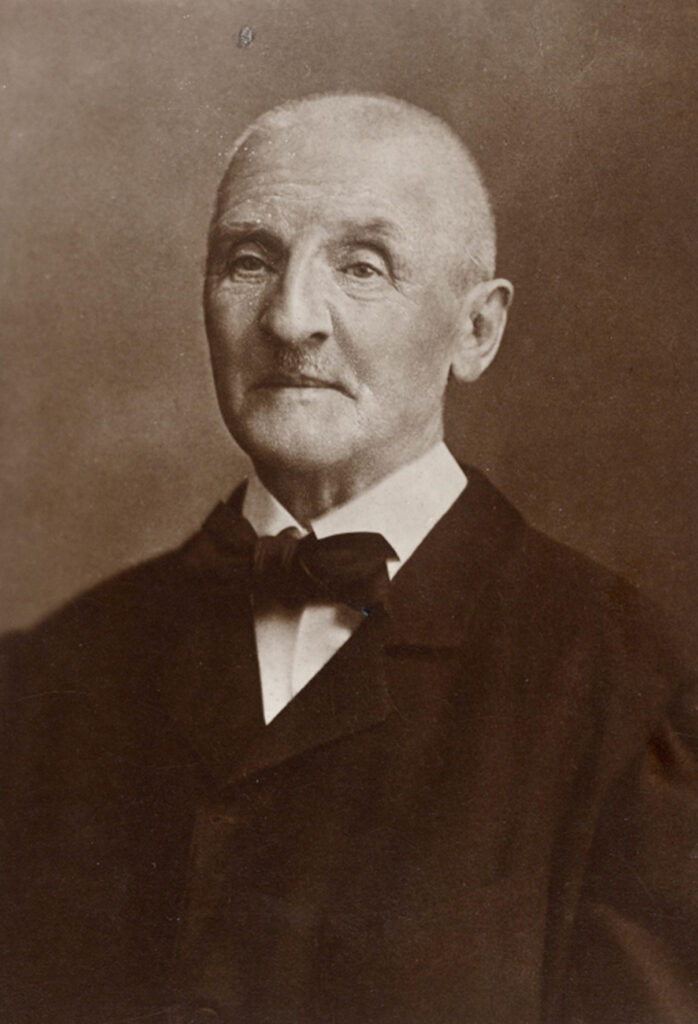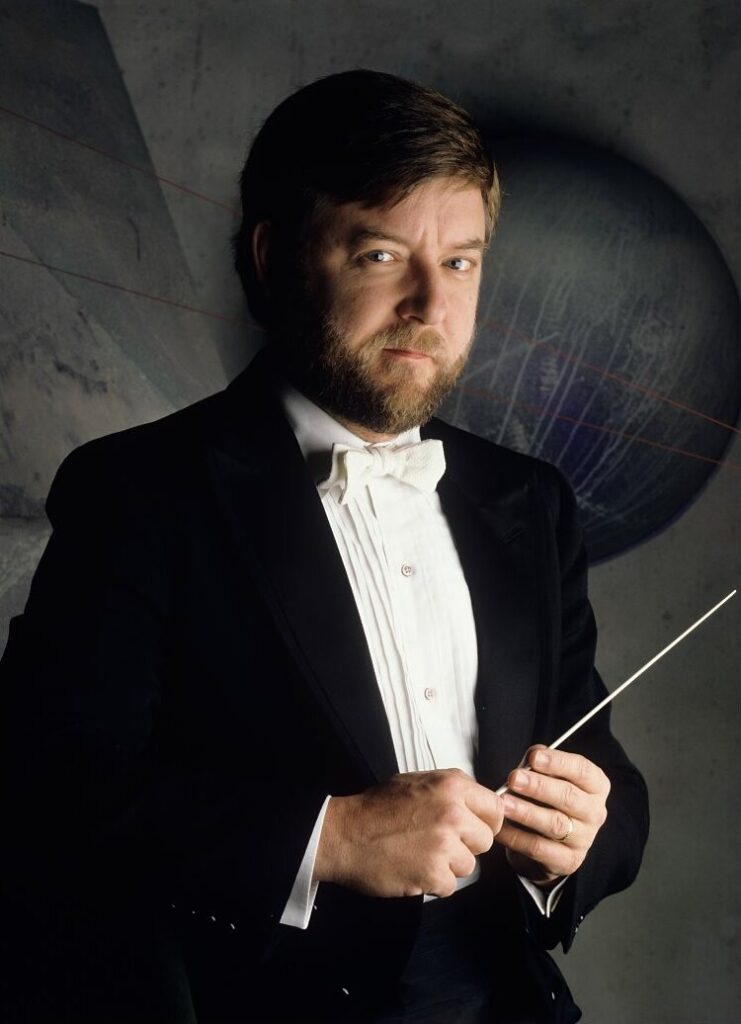
Abbildung des Bruckner, Anton [1824-1896], Künstlerpostkartea, credit Wikipedia
Endnotes, May 2024
In this edition: Bruckner, restored; Welsh composers honoured in Cardiff; reviewed by Stuart Millson
Siva Oke, Director of the SOMM record label, turns her attention once again to the world of vintage recordings. Like an art gallery restorer, she and her handpicked team of audio specialists have ‘cleaned up’ a number of Old Masters, casting a dazzling new light on recordings of years gone by. With Elgar performances of the past under their belt, SOMM ~ in this, the 200th anniversary year of the birth of Anton Bruckner ~ now turn their attention to that great Austrian symphonist (and organist), whose works have been described as ‘cathedrals in sound’. Spanning a thirty-year period (1944 to 1974) the first volume of ‘Bruckner from the Archives’ (a two-CD set) brings to the attention of Brucknerians and audiophiles, performances by the Bruckner Orchestra of Linz, under Kurt Voss (in the occasionally Schumann-like Symphony in F Minor from 1863); and the WDR Symphony Orchestra conducted by the American, Dean Dixon, to name but two of the partnerships. The latter artists appear in a superb, utterly clear-sounding heavyweight 1959 recording of Bruckner’s too-infrequently-played Overture in G Minor ~ a piece which bears a resemblance to Mendelssohn’s Ruy Blas, yet with all the intensity and Gothic tension that are Bruckner’s hallmarks.
The audio restoration and remastering of these fine interpretations is the work of the American academic, teacher, technician, and musician (he is an oboist of considerable standing) Lani Spahr, who has steered a course toward the overlooked and unknown parts of the composer’s output. Bruckner’s March in D Minor and his Three Pieces for Orchestra are revelations, and proof that the composer could produce works of succinct proportions, and not just the epic symphonies which fill the second-half programmes of Europe’s major orchestras, or, in the case of the Eighth Symphony, the whole evening. The 1940s’ sound ~ taken from original records ~ gives the Three Pieces a curious spine-tingling intimacy. And at the end of the F Minor Symphony taped in 1974, it was affecting to hear the warm applause of an audience.
Disc Two of the set brings us another rare gem, Bruckner’s String Quartet, and a 1950s’ performance from the airwaves, this time capturing Eugen Jochum and the Bavarian Radio Symphony Orchestra in the Symphony No. 1. Jochum went on in later years to record a Bruckner cycle with the Berlin Philharmonic on Deutsche Grammophon, even coming to London toward the closing years of his career to record Elgar’s Enigma Variations with the LSO ~ so followers and admirers of this conductor will relish SOMM’s discovery of this particular Bruckner broadcast.
We look forward to the next editions in the series; to further uplifting recordings and to new light, shed on a composer we thought we knew.
* * *
Standing in, on 11th April, for its indisposed Conductor-Laureate, the Japanese maestro and British music enthusiast Tadaaki Otaka, conductor Jac Van Steen led the BBC National Orchestra of Wales at Cardiff’s Hoddinott Hall in an absorbing programme of 20th-century Welsh orchestral music, but culminating in a rendition of Elgar’s (1899) Enigma Variations. The strings of the BBC Welsh orchestra responded to the silvery tides flowing through Grace Williams’s Sea Sketches, a work inspired by the South Wales Gower coast and the confluence of the Bristol Channel and Atlantic. The composer (a pupil of Vaughan Williams) came close to capturing the great drama ~ and occasional flat calm ~ of the sea’s moods, as might be heard in Britten’s sea interludes from Peter Grimes. The Cambrian coast and country also provided the background for William Mathias, in his Harp Concerto ~ a work for smaller orchestral forces. Catrin Finch was the soloist in the concerto, which has often been seen as an airy, brooding, celestial work, but which, in many ways, actually creates a percussive effect ~ ‘packing a punch’ (Miss Finch’s words) and conjuring a sense of the blood red sunsets and ‘wild sky’ evoked by Welsh poet, R.S. Thomas ~ another of Mathias’s inspirations.
Scampering, darting woodwind at the opening of the piece create a feeling of fresh air ~ sea-air, birds on the wing, light falling on waves, or clouds suddenly blocking out, then opening the sky to gleaming sunshine. At one point a trumpet plays in the background, a straightforward motif (later taken up on strings) that hints, in its cadence, at a sense of distance and mystery. A celeste also shimmers: a complement to the harp, with a yearning pastoral oboe theme then rising from the embracing warmth of the understated orchestral sound. But a moving climax is reached in the first movement, with timpani and cymbals helping to build the excitement and power of this unusually constructed and orchestrated work. The timpani then return in the more austere orchestral landscape that is the second movement; a more disturbing night-music sequence ~ a sense for the listener of being lost in wild woodland, or in a distorted reality ~ or unreality. The finale danced to a happy, optimistic conclusion, through what seemed like Welsh village lanes ~ the sun on our backs; Mathias affirming life and Nature, the harp and Celeste hinting at that subliminal world of Celtic imagination.
For Elgar’s variations, dedicated by the composer ‘to my friends pictured within’, a much larger ensemble was, of course, required, and it might have been tempting for the orchestra to play this ‘war-horse’ as if on autopilot. Yet in their journey through Elgar’s social circle in late-Victorian Great Malvern, a real sense of occasion ~ of the shaping of real characters, of the composer’s life and times, was achieved. The Winifred Norbury variation (just before the famous Nimrod) evoked a touching watercolour of a quiet gentlewoman and her elegant home, a Britain that may have gone, but which at least lives on in music. And at the finale, Elgar’s self-portrait, we grasped again the real splendour of the composer’s style: confident, with an impetuous letting loose of emotion ~ the composer from the border lands between England and Wales deservedly climbing onto a plinth beside Brahms and Strauss.
CD details: Bruckner from the Archives, Vol. 1. SOMM Ariadne, 5025.
Just before we went to press, the sad death was announced of conductor Sir Andrew Davis. A great exponent of British music, Sir Andrew had a long and fruitful partnership with both the Proms and the BBC Symphony Orchestra. We hope to bring you a full tribute in the next edition.

Stuart Millson is the Classical Music Editor of The Quarterly Review









